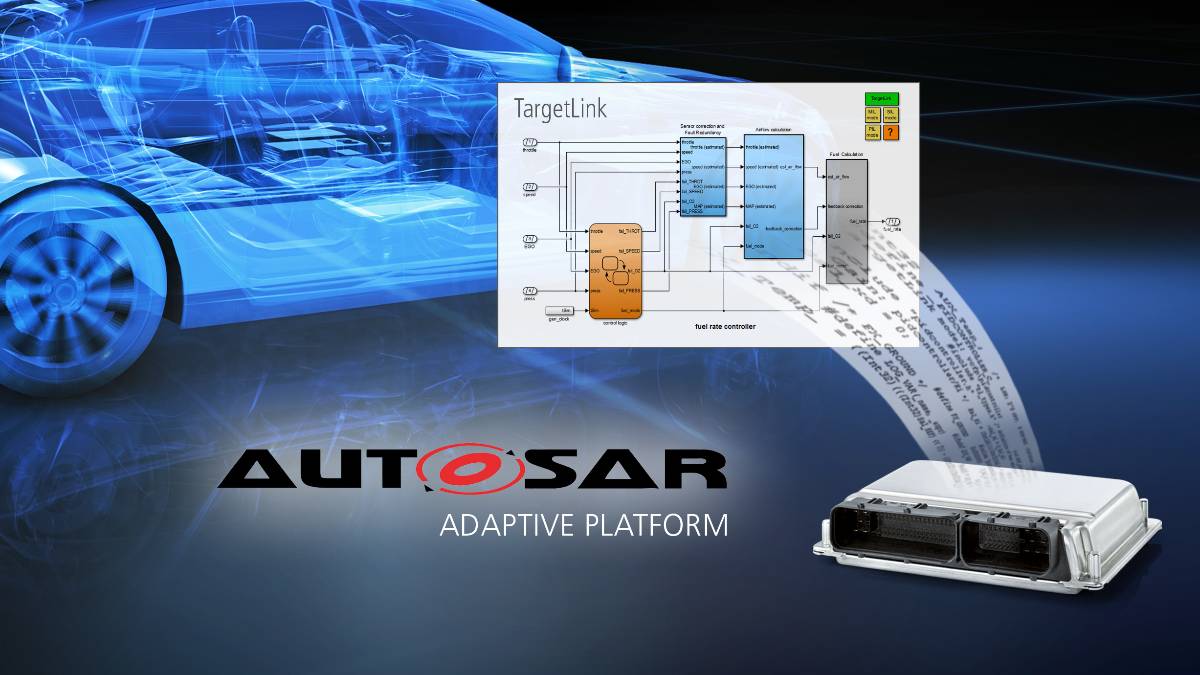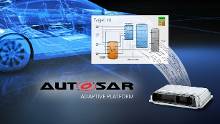TargetLink 5.0: New Version of Production Code Generator Supports Adaptive AUTOSAR
Targeted continuous development based on user feedback
Paderborn, May 12, 2020. dSPACE has launched a new version of its established production code generator TargetLink, which now supports the Adaptive AUTOSAR standard. The scope of Adaptive AUTOSAR support in TargetLink 5.0 will be expanded in the coming months in close cooperation with users. For agile development processes in the automotive industry, this ensures that precise production code required for future Adaptive AUTOSAR ECUs can be generated.
In TargetLink 5.0, software developers can develop Adaptive AUTOSAR models and generate the code required for them. The focus of supporting the new standard is initially on the model reuse of non- and Classic AUTOSAR models. This means that TargetLink users can also use existing non- or Classic AUTOSAR models for Adaptive AUTOSAR with TargetLink 5.0 and later. This makes it easier to enter the new Adaptive AUTOSAR world. Users can model Adaptive AUTOSAR in the TargetLink Data Dictionary in the same way as Classic AUTOSAR, so modeling remains easy.
Pre-Release Version Available
Starting with the initial release of Adaptive AUTOSAR, pre-releases of future TargetLink versions with Adaptive AUTOSAR support are now available. This lets users test and evaluate the advantages of the new functionalities at an early stage of development.
"Our goal is to incorporate our customers' requirements into the development process at an early stage, so that we can provide them with exactly the solution they need when they need it," says Dr. Sascha Ridder, Product Engineer TargetLink.
Once the preliminary versions have been iteratively extended, the functionalities for Adaptive AUTOSAR support will be included in dSPACE Release 2020-B in the fall.
Seamless Integration with SystemDesk and VEOS
Since Release 2019-A, dSPACE has also provided Adaptive AUTOSAR support for SystemDesk. SystemDesk allows wrapping Classic AUTOSAR interfaces to Adaptive AUTOSAR interfaces. This makes it possible to reuse Classic AUTOSAR software components created with TargetLink in an Adaptive AUTOSAR ECU, underlining the consistency of the dSPACE AUTOSAR tool chain, for example. In addition, virtual Adaptive AUTOSAR ECUs can be tested quickly and easily in combination with SystemDesk and VEOS, the PC-based dSPACE simulation platform. This allows for the early validation of new Adaptive AUTOSAR components created with TargetLink code or hand-code.
혁신을 추진하세요. 항상 기술 개발의 동향을 주시해야 합니다.
저희 전문 지식 서비스에 가입하세요. dSPACE의 성공적인 프로젝트 사례를 확인해 보세요. 시뮬레이션 및 검증에 대한 최신 정보를 받아보세요. 지금 바로 dSPACE 다이렉트(뉴스레터)를 구독하세요.


